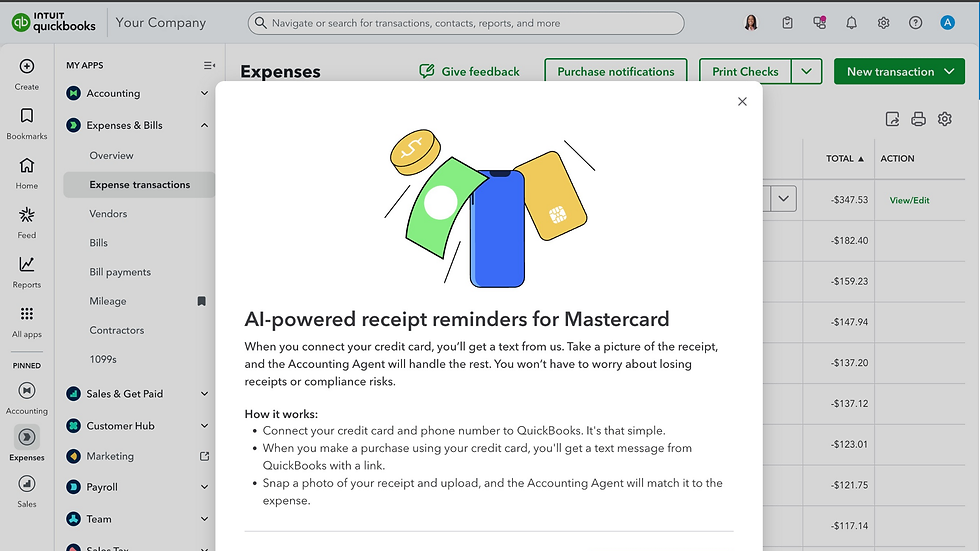How to Give Your QuickBooks Online Forms a New Look
- Susan Cook

- Oct 24, 2022
- 4 min read
Updated: Sep 29, 2023

Your sales forms are a part of your company’s identity. Customize them to preserve your brand identity in a professional, personalized, and polished manner.
Oftentimes, a consumer's first impression of a business comes from its website, a mailing, social media account, or an advertisement placement. But that impression is constantly informed by the interactions that follow, whether they are through monthly newsletters, email communication, and even the presentation of your invoices and digital sales forms.
Customers form opinions about your business not only from the quality of your products or services but also from the professionalism and aesthetics of your written communications. Customizing your digital sales forms provides an excellent opportunity to reinforce the trustworthiness of your company. And improving the appearance of your sales forms isn't superficial; it’s an important component of your branding.
QuickBooks Online provides the tools you need to make your sales forms appealing, understandable, and consistent. They enhance your image and have an impact on your customers’ overall impression of your business. In this article, you'll learn how to incorporate brand identity into your invoices and sales receipts using QuickBooks.
Where to Start
QuickBooks Online comes with an easy-to-use default invoice form to get started with. You can either edit this default or create a new one. You can also create your own estimates and sales receipts.
Click the gear icon in the upper right corner and select Custom form styles under Your Company. You’ll see the default invoice labeled Standard. We’ll leave that one as-is and create a new one, so there's always a clean version to come back to. Click the down arrow next to New style in the upper right and select Invoice. You’ll see a copy of the default invoice, like this:

This is the default invoice template that QuickBooks Online provides. You can make a copy of it and modify it for your own company.
You’ll see your modification options in the left pane of this screen. Your choices are divided into three different sections: Design, Content, and Emails. However, before you start working with any of them, enter a name for your new template in the field at the top. QuickBooks Online will have suggested a name, but you can change it to something descriptive that you’ll remember later, like My Modified Invoice1022.
Changing Your Form’s Appearance
The first tab, Design, should be highlighted. From here, you can:
Change up the template - Choose from one of the six options that QuickBooks Online offers.
Add a logo - Browse your system files to find the latest version of your logo.
Incorporate your brand's colors - Select a color palette from the ones offered that aligns with your brand's colors.
Get selective with your font - Select a new font type and size.
Edit print settings - Change the margins and other print options.
Editing Your Form's Content
When you’re done with the new aesthetic of your invoice, click the Content tab. You’ll notice that your invoice, which appears in the right pane, is grayed out. There are three pencil icons on the right side of the form. Click the one in the upper right corner, next to the invoice number. The top third of the form becomes active, and the content in the left pane changes to match the fields on the right. As you make changes in the left pane, like checking a box to add a phone number, the actual sample invoice changes to reflect that.

When you add, edit, or delete content in the left vertical pane…

…the changes are reflected in the sample invoice in the right pane. Your company information will appear like this across all of your sales forms.
As you click on the other two pencil icons in the sample invoice, the left pane displays your options for those content areas. You have control over all of the content on your forms. It’s even possible to add your own custom fields. If you're interested in incorporating custom fields into your forms, reach out to us and we’ll show you how.
Readying Customer Emails
The third tab on the customization screen, labeled Emails, shows you what your form will look like when you email it to your customer. Again, your working area is in the left pane, with the finished result appearing on the right. You have multiple options here, including the text for the subject line, greeting, and message. You can also edit the text for reminder emails.
When you’re done customizing, you can preview the PDF that will be attached to your customer emails. Then click Done. Your new invoice will appear on the Custom form styles page. Whenever you want to modify an existing sales form, click Edit at the end of its row. You can also make any form the default by opening the Edit menu and clicking Make default.
Making your sales forms the best they can be doesn’t take long. And doing so will demonstrate to your customers that you care not only about the quality of your products and/or services, but also about your communications with them.
While QuickBooks Online Essentials, Plus, and Advanced all offer the capability to customize invoices, they don't all offer the same capabilities; the customizability improves as you upgrade versions. If you think you could benefit from more functionality when customizing your sales forms, talk to us about an upgrade. You might not be able to determine the specific differences among the three versions from comparison charts online, but we can help.





Comments